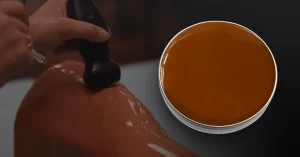
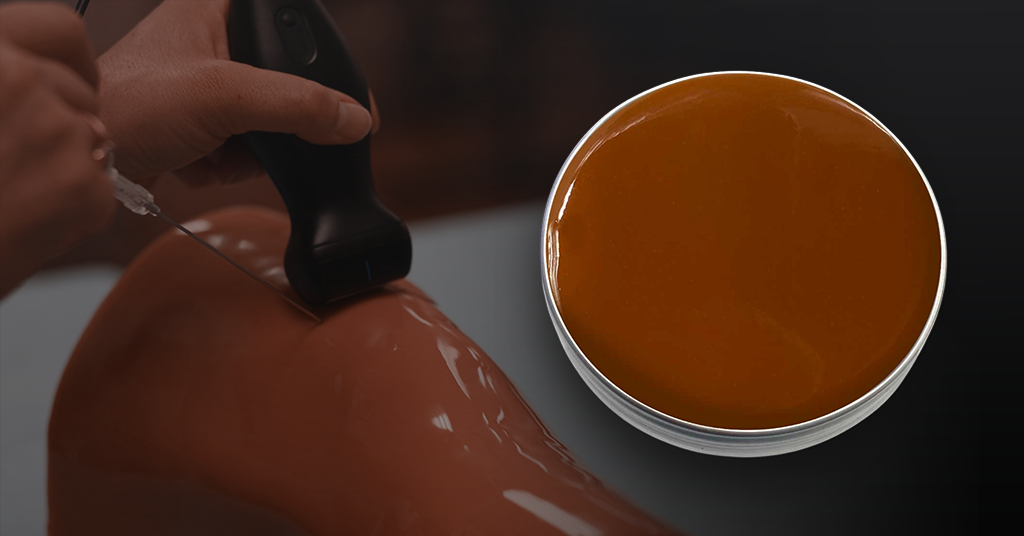
You’ve prepared the phantom, positioned the ultrasound probe, and your student begins scanning. Within seconds, they’ve located the target vessel. Easy, right? Maybe too easy.
When a phantom is perfectly clear, learners see everything—including structures they’re supposed to locate through scanning skill alone. The needle path is visible. The target is obvious. And the challenge that builds real competence? It’s missing.
This is where tan dye changes the training experience.
In medical simulation, realistic training conditions help learners develop skills that transfer to patient care. Tan dye creates that realism by adding skin-like opacity to synthetic tissue, hiding internal structures the way real skin does.
In this article, we’ll explain what tan dye is, how it works in simulation, and why it matters for building clinical competence.
Tan dye is a concentrated, non-toxic pigment formulated specifically for synthetic medical tissue. When added to clear gelatin or gel-based phantoms, it creates an opaque, skin-toned appearance that more closely resembles human anatomy.
Unlike fabric dyes or food coloring, medical simulation dye is designed to work with synthetic tissue without affecting its performance. Here’s what sets it apart:
Tan dye is added during phantom preparation. The gel is melted, the dye is mixed in thoroughly, and the colored material is poured into molds or used to create training models.
What you get is a phantom that hides internal structures while remaining compatible with ultrasound, needle insertion, and procedural practice.
Note: Tan dye isn’t paint or makeup; it’s a purpose-built simulation tool.
Clear phantoms work well for basic demonstrations. But as training advances, that transparency becomes a limitation. Real patients don’t have see-through skin, and the skills needed to locate anatomy can’t develop if everything is already visible.
Adding tan dye creates a clinically meaningful challenge:
This progression mirrors actual clinical work. No one performs procedures on transparent patients.
In ultrasound-guided procedures, target localization is a critical skill. Learners must identify vessels, nerves, or anatomical landmarks using the ultrasound screen alone.
With clear phantoms:
With tan-dyed phantoms:
When training looks more like real clinical conditions, learners develop confidence that can translate to practice. They’ve already worked through the challenge of locating anatomy without visual aids.
Research suggests that simulation-based training with realistic models can support procedural skill development and help prepare learners for supervised patient procedures.
But visual realism only works if it doesn’t compromise the phantom’s performance. That’s where formulation matters.
Adding color to a phantom isn’t as simple as mixing in paint. Medical simulation demands materials that look realistic and perform reliably. Tan tone dye is engineered for both.
Here are three key properties that make tan tone dye effective in medical simulation:
Tan tone dye changes opacity without distorting ultrasound waves. It’s formulated to blend smoothly without creating imaging artifacts.
That means:
Some colorants make synthetic tissue brittle or sticky. Tan tone dye integrates without altering mechanical properties.
The colored gel:
One bottle can color multiple phantom models. The concentrated formula means:
The application process is straightforward. Tan tone dye is added during the melting phase, stirred thoroughly, and poured into molds. It integrates into standard phantom preparation workflows without requiring special equipment.
Tan dye isn’t necessary for every simulation scenario. But when the goal is to build procedural confidence or improve imaging skills, it becomes a useful tool.
Vascular access, nerve blocks, and regional anesthesia all require learners to interpret ultrasound images—not see through the phantom.
Tan dye helps by:
This can help improve hand-eye coordination and image interpretation over time.
Central line placement, PICC lines, and IV insertion benefit from skin-toned models.
When phantoms are opaque:
This type of training may support better preparation for clinical settings.
Tan-toned models create training conditions that feel closer to patient care. This can increase engagement and help learners take scenarios more seriously.
For programs using TCCC trainers or trauma models, skin tone adds visual realism that supports the training environment.
A practical note: Tan can also be mixed with brown or amber dyes to create custom skin tones, supporting diversity in training models.
Step 1: Melt the gel – Heat your Humimic SimuGel™ to the recommended temperature (up to 190°F / 88°C). Never exceed 250°F (121°C).
Step 2: Add the dye – Shake the bottle well. Add a small amount to the melted SimuGel™ and stir thoroughly. Start conservatively—you can always add more.
Step 3: Test and adjust – Pour a small sample to check opacity. Adjust as needed before pouring into final molds.
Step 4: Pour and cool – Pour the dyed gel into molds and allow to cool at room temperature.
Step 5: Clean up – Clean any spills with warm water and soap. Wear gloves to avoid temporary staining on hands.
Safety reminder: Let melted gel cool before handling. Hot gel causes burns. Never allow children to handle hot gel. Refer to the MSDS for complete safety information.
Tan dye isn’t just about making phantoms look better. It’s about creating training conditions that support the development of skills clinicians need in actual patient care.
When learners can’t rely on visual shortcuts, they work on developing stronger scanning techniques, better hand-eye coordination, and more confidence in their procedural abilities.
That’s the difference between demonstration and skill-building.
Humimic Medical‘s tan tone dye is designed for programs that prioritize practical clinical training. It’s consistent, reusable, and formulated to work with synthetic tissue without compromising performance.
Learn more about tan tone dye or explore other skin tone options for your simulation program.
No. It’s formulated to maintain acoustic properties without creating artifacts or distorting signals.
Typically, 5-10 standard models, depending on size and desired opacity. The formula is concentrated.
Yes. As long as it remains uncontaminated, dyed SimuGel™ can be remelted and remolded multiple times.
Yes. Tan blends with brown, amber, or peach to create custom skin tones.
Yes. It’s non-toxic when used as directed. Wear gloves during application to avoid temporary staining.

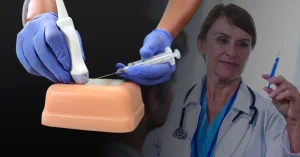
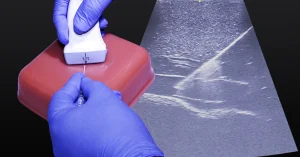
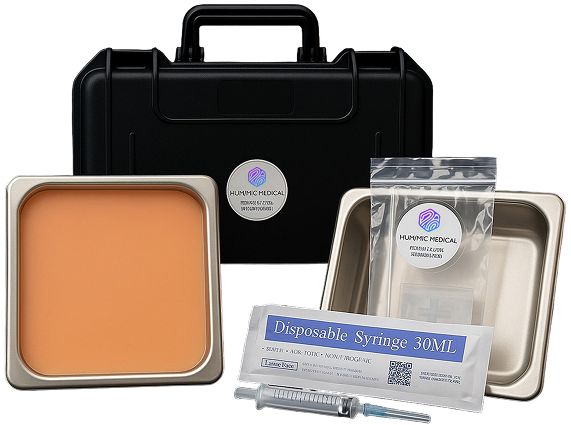
We design trauma trainers, gel models, and procedural tools customized to your exact use case — all powered by Humimic SimuGel™.